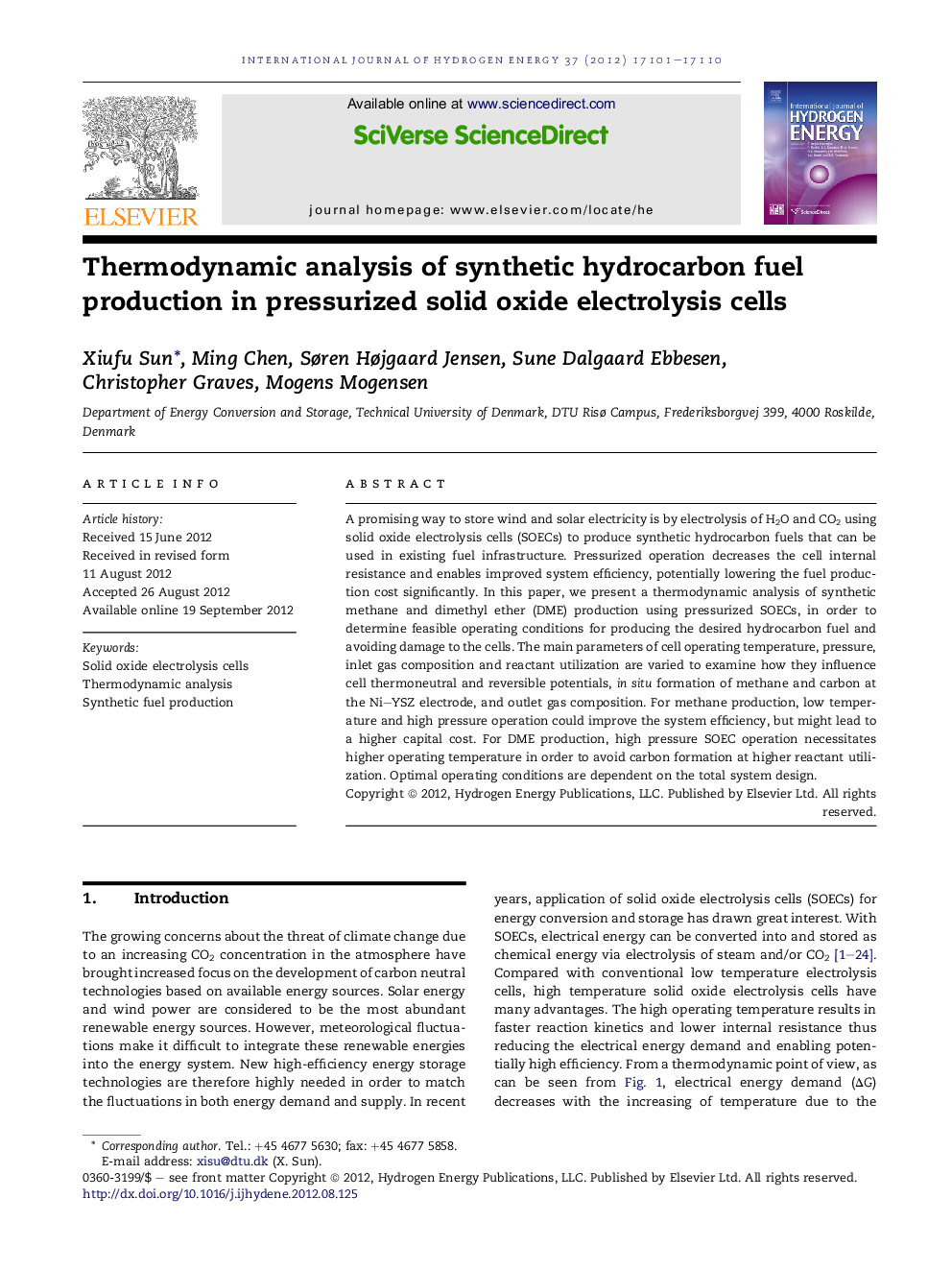| Article ID | Journal | Published Year | Pages | File Type |
|---|---|---|---|---|
| 1270892 | International Journal of Hydrogen Energy | 2012 | 10 Pages |
A promising way to store wind and solar electricity is by electrolysis of H2O and CO2 using solid oxide electrolysis cells (SOECs) to produce synthetic hydrocarbon fuels that can be used in existing fuel infrastructure. Pressurized operation decreases the cell internal resistance and enables improved system efficiency, potentially lowering the fuel production cost significantly. In this paper, we present a thermodynamic analysis of synthetic methane and dimethyl ether (DME) production using pressurized SOECs, in order to determine feasible operating conditions for producing the desired hydrocarbon fuel and avoiding damage to the cells. The main parameters of cell operating temperature, pressure, inlet gas composition and reactant utilization are varied to examine how they influence cell thermoneutral and reversible potentials, in situ formation of methane and carbon at the Ni–YSZ electrode, and outlet gas composition. For methane production, low temperature and high pressure operation could improve the system efficiency, but might lead to a higher capital cost. For DME production, high pressure SOEC operation necessitates higher operating temperature in order to avoid carbon formation at higher reactant utilization. Optimal operating conditions are dependent on the total system design.
► Thermodynamic analysis of pressurized SOECs to determine operating conditions. ► Influence on thermoneutral and reversible potentials. ► Feasible operation condition for methane and DME production, outlet gas composition. ► Higher operating temperature to avoid carbon formation at higher utilization.
